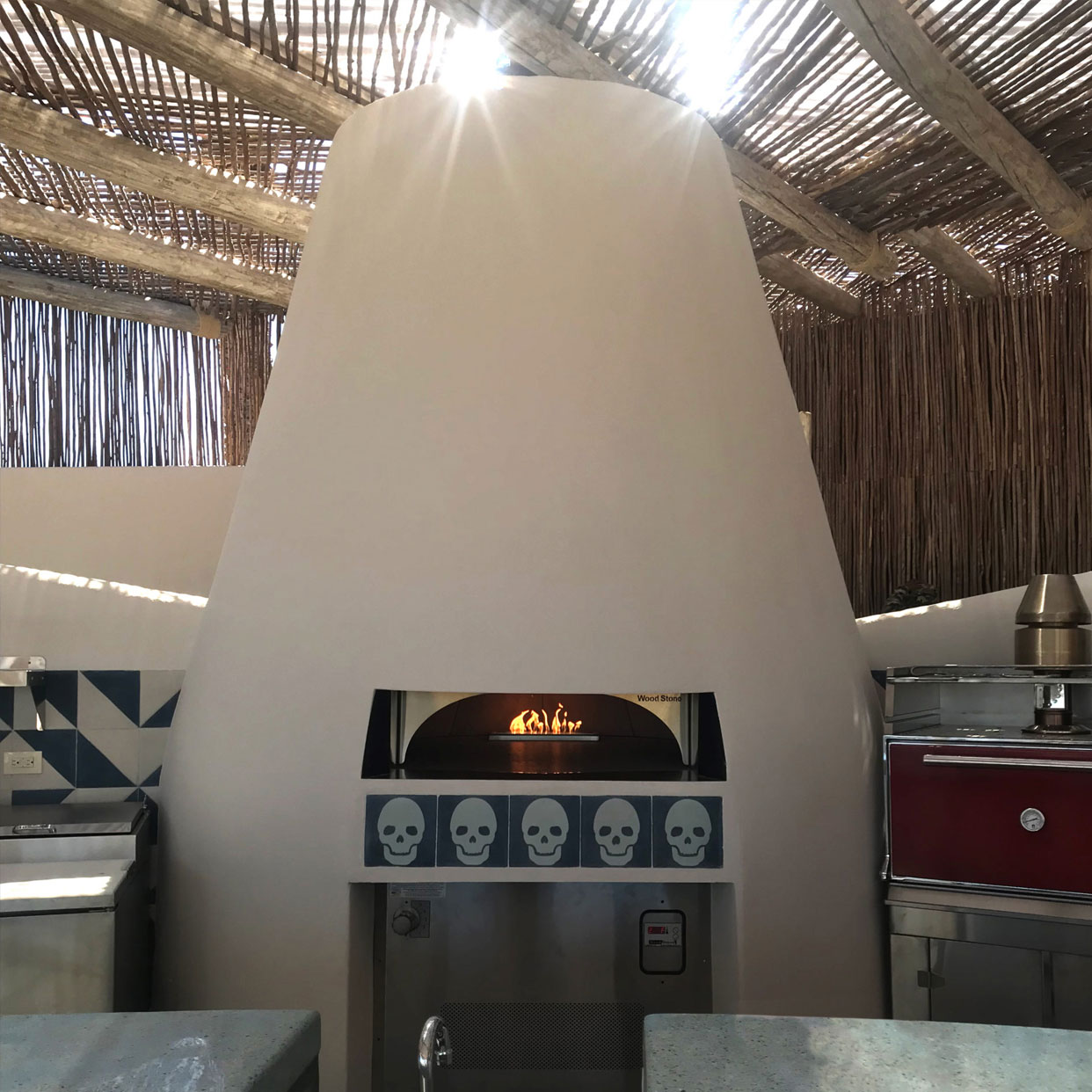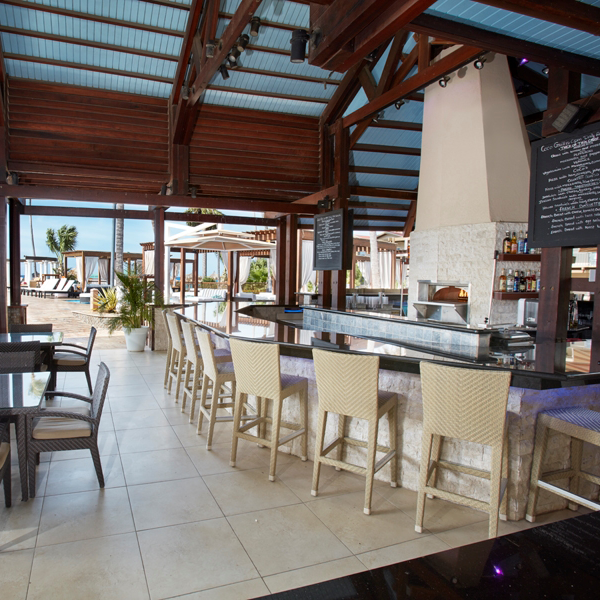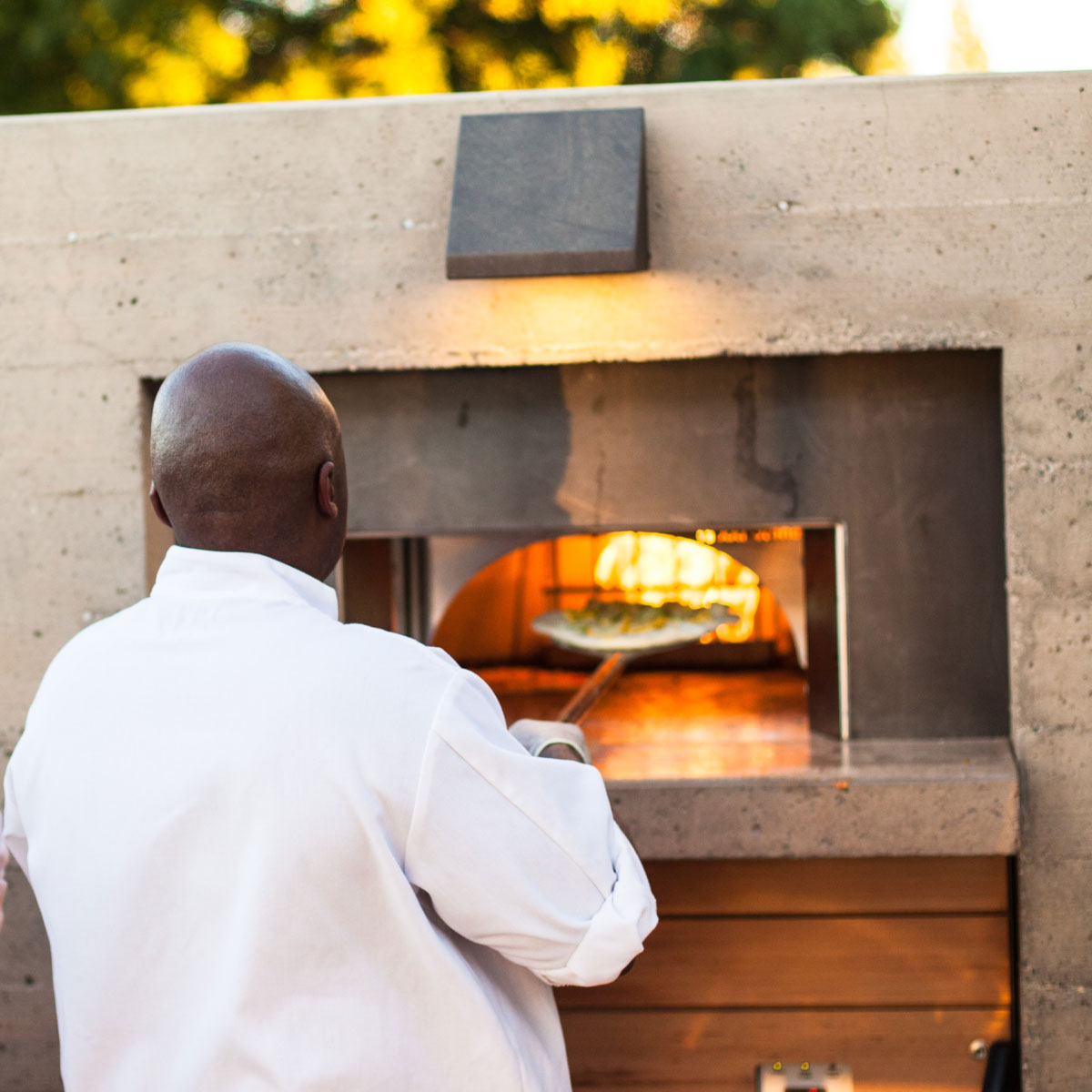Outdoor Installations
Wood Stone Mountain Series and Bistro Line ovens are suitable for outdoor installation. When ordering, please specify that you will be installing the oven outdoors. Options are available to make the oven better suited to be in the weather.
An outdoor installation can be:
- Installed without a roof structure above the oven, i.e. completely exposed, or
- Installed within an open structure with a roof above the oven.
Both types of outdoor installations share the common guidelines directly below. The primary difference between the two types of installations involve ventilation methods, which are detailed after the common guidelines.
Common Guidelines for Outdoor Installations With or Without a Roof Over the Oven
Mountain Series
The standard Mountain Series oven incorporates an open stand design. To protect key oven components from damage due to moisture, leaves, debris or animals, the oven should be ordered with our stainless steel stand wrap option, or built with a decorative facade wall around the oven stand on site. Our Facade Tutorials can be helpful for building ideas and tips.
Please refer to the oven’s Installation and Operation Manual for required clearances. Using all non-combustible materials takes away any clearance concerns. Of course, for an outdoor installation, waterproof materials are a must.
Bistro Line Ovens
Bistro Line ovens incorporate a closed-stand design, so when ordered for outdoor use, it does not require any additional enclosure. Please refer to the oven’s Installation and Operation Manual for required clearances.
Other Considerations
When planning your outdoor installation, it is important to be aware of environmental factors such as wind that can affect oven performance and reliability. The oven should be oriented to minimize exposure to wind blowing into or at the oven. Wind issues can usually be mitigated, at least partially, by oven positioning, and in some cases, creative use of screens or other barriers to protect the oven from unwanted wind exposure.
In a commercial environment using a wood-fired oven, it is critical to take into account issues that may arise from generating wood smoke. Proximity to buildings and neighbors, as well as prevailing weather conditions, should be evaluated when planning an outdoor solid fuel installation.
Ventilation: Installations Without a Roof Structure Above the Oven
Depending on the oven’s proximity to adjacent structures, the ventilation requirement may be minimal. For an oven well away from adjacent structures, we recommend attaching a 3 to 4 ft. flue constructed of 16 GA mild, or 18 GA stainless steel to the oven flue collar. This will help draft the oven exhaust above and away from the user. A weather cap should be installed on top of this flue. As with any cooking equipment installation, you will want to review your plan with your local building and fire departments as they may have additional requirements specific to your installation.
For installations adjacent to structures, ventilation concerns may include distance to the structure, height of the structure, distances to windows, doors, air intakes etc. Please consult with your local code official to review specific requirements for your installation.
Ventilation: Installations With a Roof Structure Above the Oven
Follow the standard hood or direct connect venting instructions in the oven’s Installation and Operation Manual. For direct connect installations only, the exhaust fan is optional. However, for installations utilizing the direct connect venting method but omitting the exhaust fan, we still recommend wiring for the exhaust fan.
Outdoor installations are very dependent upon specific site conditions, such as wind and airflow patterns, which can cause pressure differences affecting the natural draft capabilities of the oven flue system. An exhaust fan can counter many of these conditions, and allow for more consistent and proper ventilation of the oven. Should it be discovered afterwards that an exhaust fan is required, having prewired for the fan will save the expense of retrofitting your installation.
Photo Gallery
Wood Stone
Outdoor Installations
Yes! Some Wood Stone equipment CAN be easily installed outdoors. If you have specific questions about products you'd like to install outdoors, please contact us at 360-650-1111 so we can discuss what is needed to ensure both a safe install and the life of the product.
View our entire outdoor image gallery here


